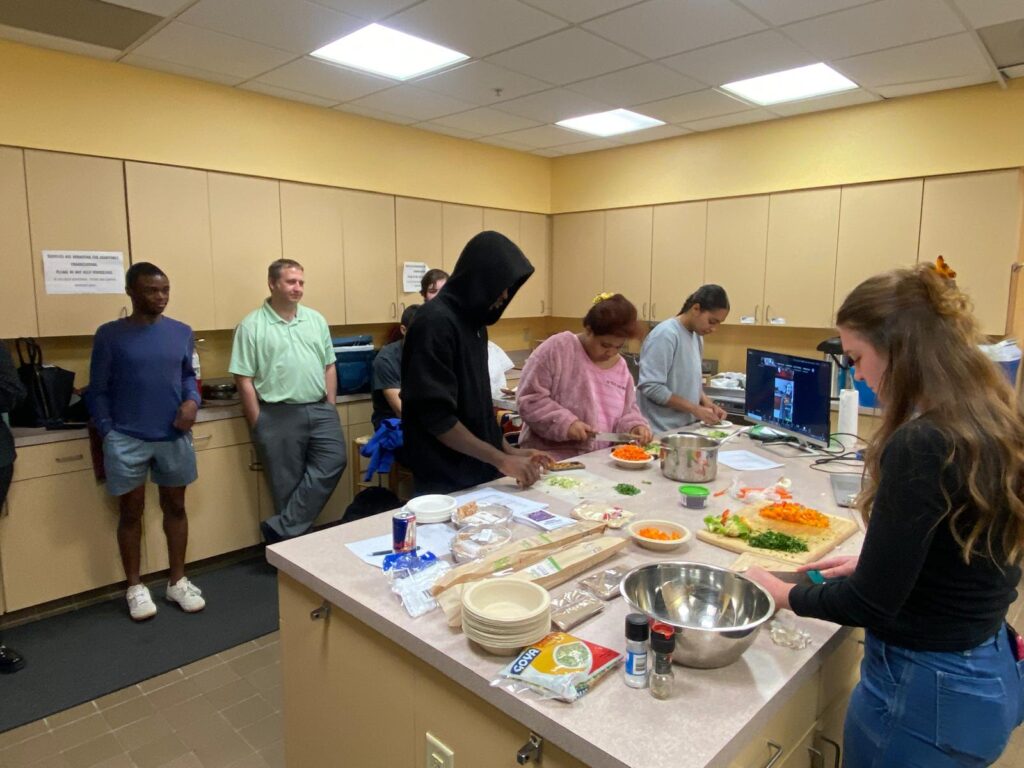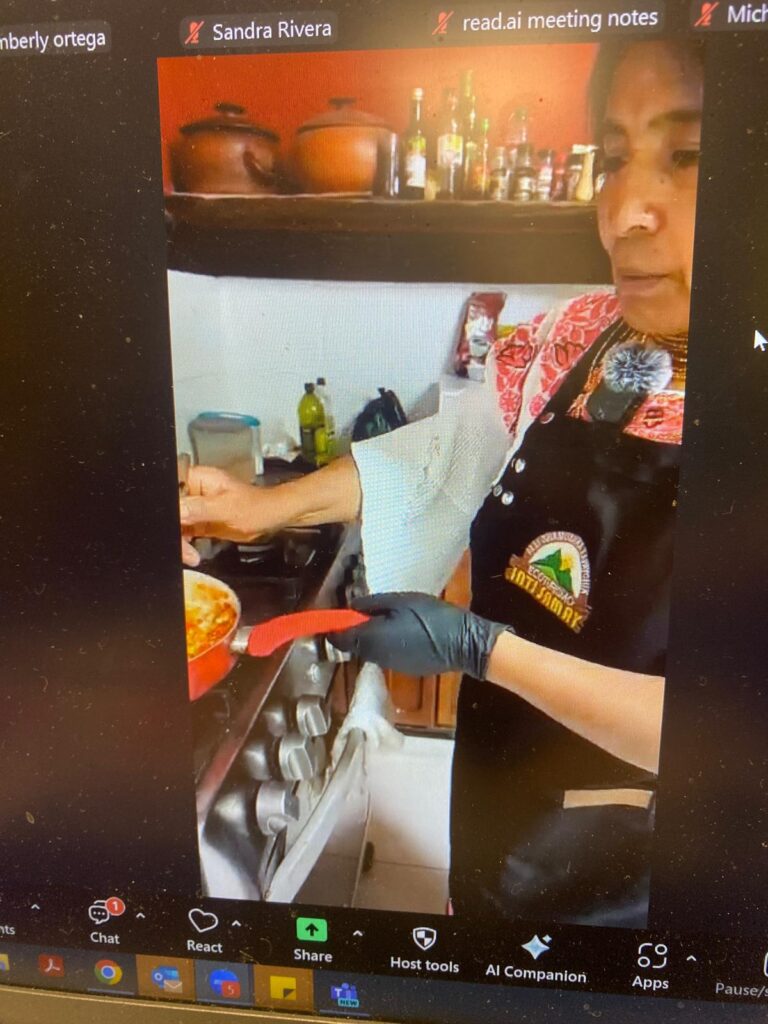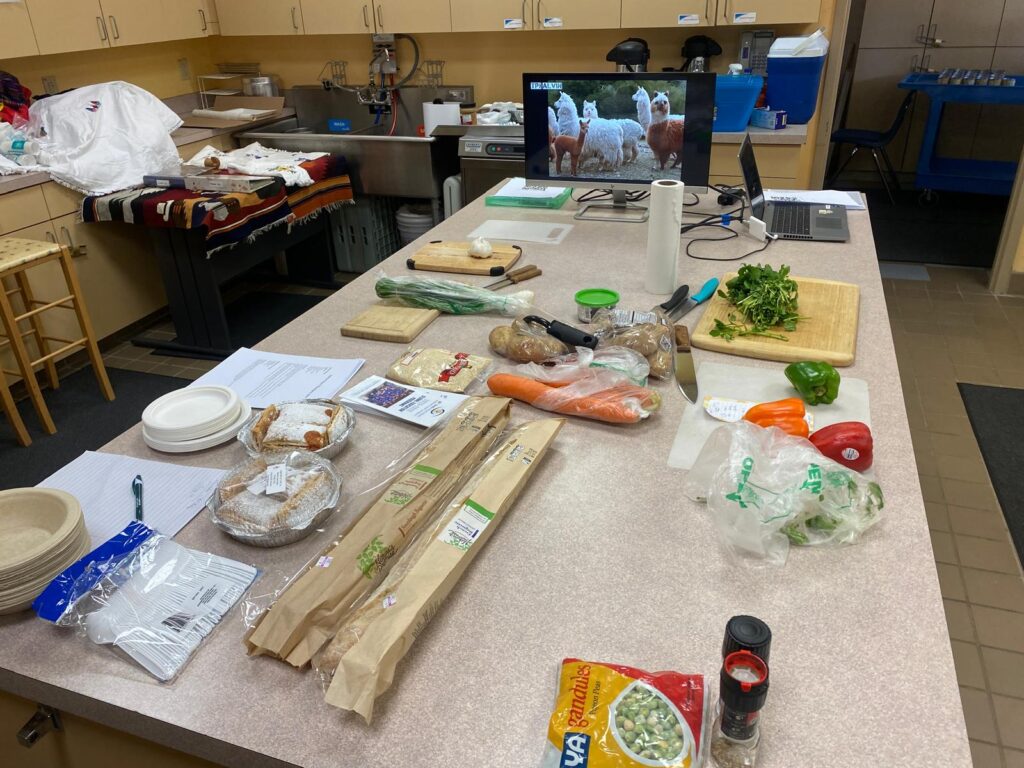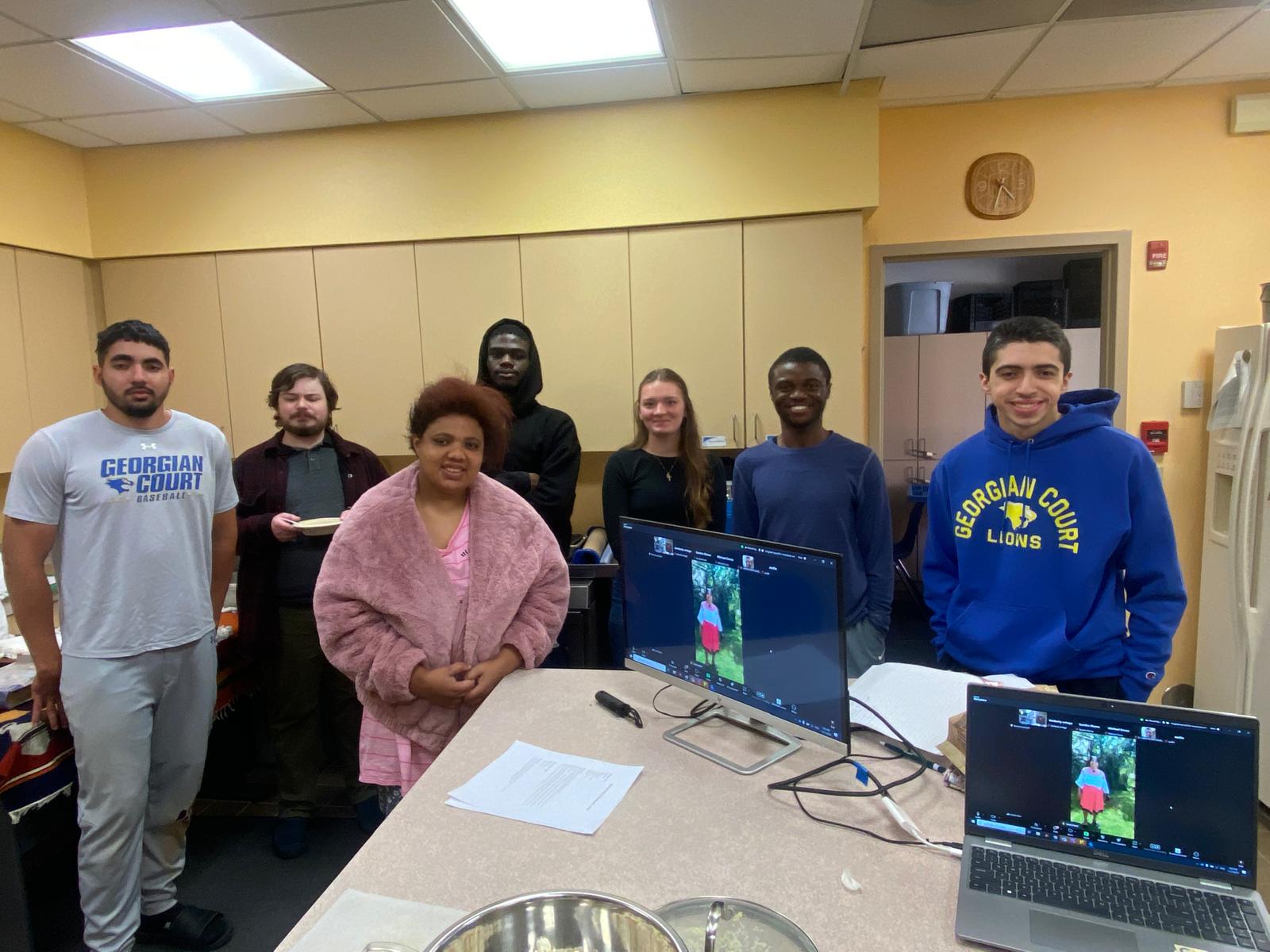




Paige Oswald – “On this day, we got to learn how to cook quinoa soup. The host taught us on Zoom, and we followed the steps in the school kitchen together. Afterwards, we got to learn about medicinal plants and the ways they use them to treat illnesses in their community. This reminded me of when I went to Guatemala and learned about the medicinal plants that the Mayan communities use there.”
Sophia Raimondi – “I found papa capita to be extremely interesting because I love all the different types of variations of potatoes. I also found it interesting that she knows about 30 different types of potatoes and has 12 varieties of potatoes just on her property. I always love potatoes because there are so many different ways that they can be cooked. They can be mashed, boiled, fried, etc. It gives people so many options when cooking with them. I also find it interesting that potatoes are equally popular in Ecuador as they are in America. Potatoes are extremely popular in the U.S. for their various ways of cooking, and it seemed like the same situation went for Ecuador’s liking of them.”
“I also found it interesting that in Ecuador, they use a wood-burning oven to cook their food. This is also a very similar and popular way of cooking in the United States. People in the U.S. choose to cook with a wood-burning oven when they are cooking pizza. They cook the pizza evenly and make it taste fresher than some actual pizza places. I wonder if given the opportunity to use an electronic oven versus wood wood-burning oven, which one would make the food taste fresher and better than if cooking in the other oven. “
Jaden Garret – “For this cooking session, we made Quinoa soup and blackberry juice, which are popular in Ecuadorian cuisine. I had a really great time helping to create these wonderful dishes. We learned about the different cooking techniques used to prepare and cook. I took part in peeling the carrots and stirring the ingredients on the stove for our Quinoa soup. Additionally, we learned about some of the medicinal plants that are used, which was very interesting. It was an amazing culinary experience to take part in, and I’m glad I did.”
John Indjeian – “Friday introduced some soup and strawberry drinks that I unfortunately didn’t get to taste test. The soup was good, though, simple but tasty. I was amazed to learn that certain herbs could cure drunkenness by placing them on your stomach. I noticed how lucky we are to have more modern standards of cooking, as I noticed Martina needed an outdoor stove, which requires more effort to cook, I imagine. Sadly, though, my culinary skills are subpar, so I couldn’t make a nice dish like Professor Dunn and Martina did.”
Megan Damico – “I wish I had not hurt my ankle so I could be on campus for this day. This time, having the ability to zoom for cooking was really nice. The fact that the whole family is included in the process of hosting us. Verdo, an old student from our school who is translating for Laura, was really nice. This experience feels more like we were there. Martina’s fruit looks fresh compared to our fruit here in America. See the fruit and vegetable cut up in the kitchen in Ecuador, compared to the ones here in America, they look a lot fresher. Getting to see the meal was really nice. Something that stood out was the fact that hung up on the wall. The homemade bread looks easy to make. The fact that their lunch stood out is their biggest meal. The way they cook the bread is interesting in the brick oven is cool. I love her open Martiez was about her family. If your tummy hurts when visiting, you can grab medicine from her backyard.”

